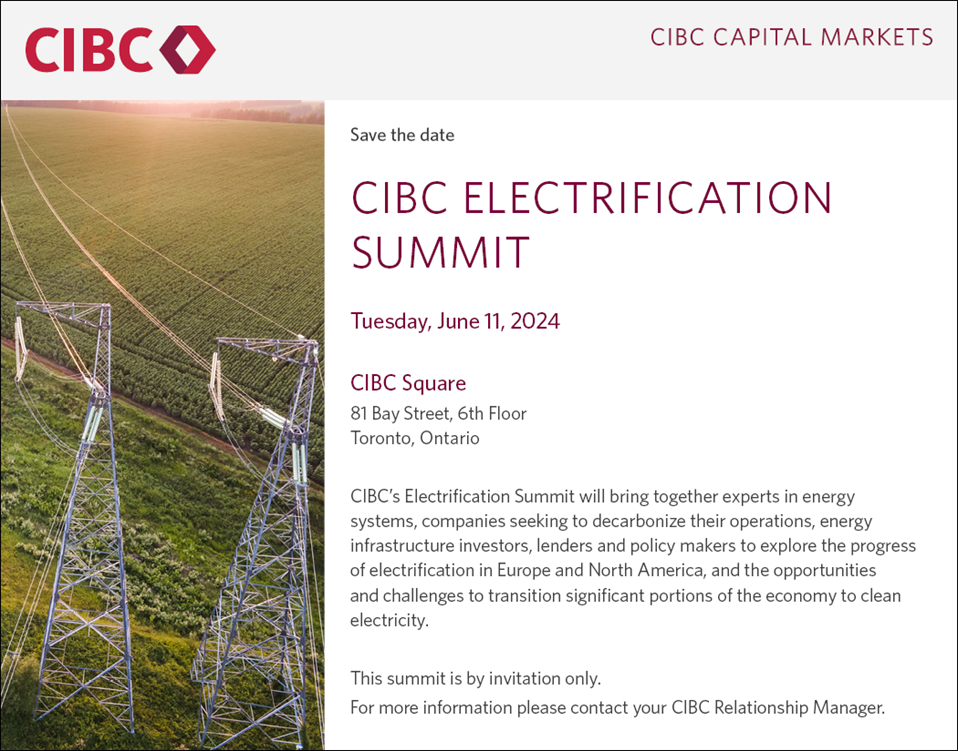

- CSSB releases first Canadian sustainability disclosure standards
- Without 5 key clean technologies, emissions growth would be 3x higher
- How lenders and investors can accelerate building decarbonization
- 50% more corporate VCM participation possible, if challenges addressed
- New proposals usher change for North American compliance markets
- Canada’s great blue opportunity: Blue bonds
- US makes ‘largest industrial decarbonization investment in nation’s history’
- New research warns of ‘Climateflation’ implications for monetary policy
- Deal Announcements
- Thought Leadership
Top Story
CSSB releases first Canadian sustainability disclosure standards
The Canadian Sustainability Standards Board (CSSB) published a proposal for the first Canadian Sustainability Disclosure Standards (CSDSs).
Quick recap: The CSSB was established in 2023 shortly after the International Sustainability Standards Board (ISSB) published its IFRS Sustainability Disclosure Standards. Like the IFRS S1 and IFRS S2 global baseline, the CSSB proposes disclosure standards for Canadian entities to report (on a voluntary basis until they are mandated by jurisdictional regulators) on sustainability-related (CSDS 1) and climate-related (CSDS 2) risks and opportunities that are relevant to investors and other stakeholders.
However, CSSB has introduced certain deviations compared to the international standards in its recently released Criteria for Modification Framework, including: 1) Extending the effective date by one year, to become voluntarily effective for annual reporting periods beginning on or after January 1, 2025; 2) Extending the transition relief for disclosures beyond climate-related risks and opportunities from one year to two years; 3) Extending the disclosure of comparative information (about their sustainability-related risks and opportunities, other than climate-related risks and opportunities) from the second annual reporting period to the third annual reporting period, and 4) Extending the transition relief for disclosure of Scope 3 greenhouse gas emissions from one year to two years. Further amendments could be introduced following the consultation process.
Why is this interesting? More countries are driving towards consistent and comparable disclosures across jurisdictions to catalyze the net zero transition. Another example is Singapore which recently announced it will incorporate the ISSB standards into the disclosure requirements for listed and large non-listed companies starting FY2025. Overall, companies must ensure their readiness by understanding the current state of climate disclosures and information, identify disclosure and control gaps, and assess reporting and data management needs.
Listen to our podcast where experts discuss the Canadian sustainability standards and implications for Canadian corporates.
Energy Transition & Decarbonization
Without 5 key clean technologies, emissions growth would be 3x higher
The International Energy Agency (IEA) released two analyses showing that clean energy deployments have scaled to new heights in 2023, helping to limit the growth of greenhouse gas emissions worldwide.
Quick recap: The IEA’s first edition of Clean Energy Market Monitor assesses global clean energy deployment trends in 2023 by tracking a select group of five key technologies that include solar PV, wind, nuclear, electric vehicles, and heat pumps. It finds that between 2019 and 2023, clean energy generation outpaced the growth in fossil fuels by a ratio of 2-1, fueled by government stimulus stemming from the global pandemic and energy crisis. In the same period, clean electricity consumption (end-use) also grew two times more than fossil fuel-based electricity consumption.
In a companion report on CO2 Emissions in 2023, the IEA found that global energy-related CO2 emissions grew by 1.1%, or 410 million tonnes (Mt) – which represents a slight decline compared to 1.3%, or 490 Mt, in 2022. Between 2019 and 2023, total energy-related emissions increased 900 Mt, but could have been as much as three times larger had it not been for the growing deployment of the five key clean energy technologies cited above.
Why is this interesting? According to the IEA, clean energy is at the heart of a ‘structural slowdown’ in global CO2 emissions. Advanced economies saw a record decline in their rate of emissions growth in 2023, falling by around 4.5% which is lower than the level fifty years ago. Nearly two thirds of this decline occurred in the electricity sector.
How lenders and investors can accelerate building decarbonization
The Rocky Mountain Institute (RMI) released a new report on Financing US Building Decarbonization, identifying actions that lenders and investors can take to increase the flow of capital to specific building segments responsible for the greatest proportion of emissions.
Quick recap: To inform the research, RMI built “the most detailed US buildings emissions model created to date”. It finds that building operations generate 23% of US annual carbon emissions, with existing buildings representing most of the sectors’ emissions in comparison to new stock. Furthermore, single-family homes contribute more than half (58%) of US buildings’ emissions, while commercial buildings contribute more than a third (37%). Crucially, green capital flows to the sector are nowhere near sufficient to meet US net-zero goals by 2050.
RMI calls on lenders and investors as key actors in catalyzing capital flows to decarbonize real estate. Some of the recommendations include: prioritizing funding towards the retrofit of existing buildings; integrating Inflation Reduction Act (IRA) tax credits and rebates for financing energy efficient technologies into home improvement loans or offer additional bridge loans until IRA tax credits and rebates are collected; and for lenders who already hold billions in replacement reserves for commercial properties to utilize towards efficiency upgrades.
Why is this interesting? Much of the building decarbonization movement has been driven by equity holders’ pursuit of sustainability objectives in their investment portfolios. But according to the report, ambitious goal setting has been scarce. For example, seven of the top 10 REITs have set emissions reduction goals, but only one has pledged to reach net-zero emissions by 2050 or earlier.
Carbon Markets
50% more corporate VCM participation possible, if challenges addressed
We Mean Business Coalition, in partnership with Intercontinental Exchange (ICE) and Bain & Company, published new research on corporate attitudes to the voluntary carbon markets (VCM).
Quick recap: Based on a survey of 180 cross-sector executives from 27 countries, the research finds that one third of respondents are already purchasing carbon credits to meet voluntary goals. Of these, more than 50% indicated that VCM plays an important role in their ability to achieve decarbonization objectives; and 71% indicated that participating in VCM allows their company to accelerate climate action which wouldn’t otherwise happen without purchasing carbon credits.
The survey also reveals that companies see risk in participating in VCM. Challenges cited include unclear rules on making claims, lack of transparency on credit quality, complexity of standards and accounting principles, and a lack of recognition of credits by climate goal standard-setters. However, by addressing the most common challenges, the survey finds that participation in VCM could be boosted, by as much as 50% if the perceived legal or reputational risks of using carbon credits were mitigated, and annual VCM spend could increase by 9% if carbon credits were recognized by standard-setters (e.g., SBTi) for use in corporate climate targets-setting.
Why is this interesting? Corporate attitudes to VCM remain largely supportive of the role carbon credits play in corporate climate strategies. But to unlock greater VCM participation and investment, 2024 will be a key year for market facilitators (e.g. standard-setters, market integrity bodies) to demonstrate their ability to address key market credibility challenges through newly launched initiatives, such as the Core Carbon Principles and the Claims Code of Practice.
New proposals usher change for North American compliance markets
Two proposals by sub-national governments in the US and Canada signal the potential for new changes in the North American compliance market landscape.
Quick recap: The governments of California, Quebec and Washington announced an interest to link their carbon markets. California and Quebec each operate cap-and-trade programs that were linked in 2014 into a shared emissions trading market administered by the Western Climate Initiative (WCI). A potential linkage with Washington’s burgeoning cap-and-invest program which launched in 2023 would allow businesses to access a larger pool of allowances from any of the three programs to offset their emissions, while joint auctions would allow participants to trade across jurisdictions at uniform prices – meaning less exposure to price volatility. Each government would need to pass regulatory amendments not likely before 2025.
In separate news, Pennsylvania announced it intends to adopt a standalone cap-and-invest program. If passed, the proposed Pennsylvania Climate Emissions Reduction Act would set carbon caps for large power plants, about 55 throughout the state, requiring them to buy credits to offset any carbon emissions above the cap. Funds collected from the program would go towards clean energy projects – such as carbon capture and storage, geothermal deployment, and clean hydrogen – as well as provide rebates on consumers electric bills. The proposal would also see Pennsylvania drop from the Regional Greenhouse Gas Initiative (RGGI) – a multi-state carbon capping market which it joined in July 2022.
Why is this interesting? For the US jurisdictions involved, negotiations are taking place during an election year which raises potential uncertainty over the future of climate policies that may be unpopular with some voters. For instance, a Pennsylvania court decision in November 2023 (supported by Republicans) ruled that funds generated through RGGI are an ‘unconstitutional tax’.
Sustainable Finance
Canada’s great blue opportunity: Blue bonds
On March 26, 2024, the Investment Industry Association of Canada (IIAC) hosted a panel discussion on “Blue bonds: Are they part of Canada’s sustainable finance future?”. Siddharth Samarth, Managing Director & Head, Sustainable Finance, CIBC Capital Markets, spoke on the panel to share insights on the financial innovation supporting the sustainable Blue Economy.
Quick recap: The Blue Economy encompasses economic activities that rely on, or impact the use of, coastal and marine resources. The panel brought together sustainability professionals from across the financial sector and covered a wide range of topics, including the importance of the Blue Economy, the role of sustainable finance to support climate adaptation and mitigation of maritime resources, and the emergence of sustainable finance products and solutions. However, blue bonds (a debt instrument that finances the sustainable use of maritime resources and related economic activities) remain a nascent market lacking standardization, data consistency, and measurement. The panel discussion offered a positive outlook for Canada – that with appropriate policy acceleration, industry standards and private sector collaboration, combined with our vast water resources, Canada would be well-positioned to access new opportunities to succeed in the fast-growing sustainable Blue Economy.
Why is this interesting? An S&P report on sustainable bonds estimates that the blue bond market could gain significant traction in 2024. While blue bonds currently represent only a fraction of the wider sustainable bond market, S&P point to the potential for a wider range of projects being financed by sovereign issuers. According to the United Nations, 95 countries have set goals, policies or measures aimed at preserving and restoring marine ecosystems, including a historic High Seas Treaty in June 2023.
Governance & Policy
US makes ‘largest industrial decarbonization investment in nation’s history’
The US Department of Energy (DOE) announced up to USD $6.3 billion in funding toward projects that will decarbonize energy-intensive industries across 20 states, in what is billed as the largest federal funding for industrial decarbonization in US history.
Quick recap: The DOE will fund 33 projects aiming to reduce greenhouse gas emissions from the highest emitting industries. The funding, which stems from the Inflation Reduction Act and Bipartisan Infrastructure Law, will provide up to 50% of the cost of first-of-a-kind or early-stage clean technologies that will further accelerate the demonstration of commercial-scale decarbonization solutions across pathways that include energy efficiency, electrification, and alternative fuels and feedstocks. Among the larger awards are USD $500 million each to a green aluminum smelter project, a net-zero cement plant, and hydrogen-fueled zero-emissions steel making. The funding program is expected to drive USD $20 billion in total investments leveraging private sector’s share of the costs.
Combined, the projects will cut more than 14 million metric tons of carbon emissions per year, which is similar to the yearly emissions of 3 million cars that run on gasoline. Almost 80% of projects are located in disadvantaged communities, offering co-benefits such as job creation and clean air for communities that have experienced years of divestment.
Why is this interesting? In the last few months, President Biden unveiled ambitious climate regulations that limit CO2 emissions from fossil fuel-fired power plants, methane pollution from oil and gas operations, and pollution from passenger cars and light-duty trucks. While power’s and transportation’s share of total US emissions is set to decline into the 2030s with the scaling of clean energy and electric vehicles, the industrial sector would become the next biggest polluter. Biden has yet to impose new climate controls on industrial facilities.
Emerging Sustainability Themes
New research warns of ‘Climateflation’ implications for monetary policy
New research by the Potsdam Institute for Climate Impact Research and the European Central Bank describes how global warming and heat extremes will enhance inflationary pressures in the coming decades, affecting not just food prices but posing challenges for monetary policy.
Quick recap: The report explores the relationship between climate shocks and inflation – known as ‘climateflation’ – and the implications for inflation risks under future climate change. It shows that food prices are the most affected by climateflation due to supply disruptions from extreme weather, and that changes in average temperatures will have an impact on long-term inflation. For example, when Europe had record-breaking heat in the summer of 2022, food inflation rose 0.43 to 0.93 percentage points. Researchers estimate that by 2035, temperature increases would cause food inflation of up to 3 points and headline inflation could go up 1 point – which is significant given that central banks, like the Fed, aim to keep inflation at 2%. The report warns that higher or unstable food prices would also threaten economic and human well-being, political stability, and the ability of central banks to plan and achieve their price stability goal in the future.
Why is this interesting? Research on climateflation is relatively nascent, but this latest report warns that weather and climate shocks can no longer be seen as temporary causes of inflation. Rising climateflation would also have adverse effects on business and consumer purchasing power bringing further changes to spending and shopping behaviours.
Sustainability across CIBC
At CIBC, we are focused on our goal to make sustainability a reality for our clients and the communities we serve. Whether through greening their balance sheet or providing sustainability advisory services, our objective is to help our clients become global leaders in environmental stewardship and sustainability.
Deal Announcements
In line with our commitment to make sustainability a reality for our clients and the communities we serve, CIBC Capital Markets led significant client deals as part of a focused objective to help our clients become global leaders in environmental stewardship and sustainability.
Bruce Power
Longroad Energy - Serrano Project
Thought Leadership
Events

Podcasts


The CIBC logo and “CIBC Capital Markets” are trademarks of CIBC, used under license.
Key Contacts










































